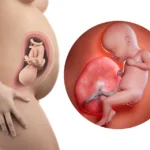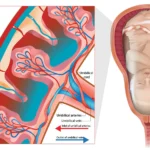IVF is an assisted conception treatment that is offered to couples who have fertility issues. This method involves retrieving eggs and semen, combining them outside of the woman’s body and transferring the fertilized eggs back into the uterus for the pregnancy to continue. This is generally considered a long and complicated procedure, but is highly successful in achieving pregnancies.
Thanks to the advancements in modern science, childless couples are able to have kids with the help of IVF. This entire process however, can feel challenging, especially for women, because they have to follow precisely as per the doctor’s instructions and go through a number of tests, medications, shots and other procedures till the fertilized eggs are transferred back to the womb.
IVF definitely involves some injections, but the number depends on general health of women and differs with each woman. Your health is evaluated first, assessing the condition of uterus and ovaries and then medication will be prescribed according to your body’s requirement. You will also need to undergo thyroid and ovarian reserve tests. Learn about IVF treatment side effects in detail here.
Treatment process
One complete IVF cycle involves multiple steps. The first step is to use fertility drugs to stimulate the ovaries. Your ovulation cycle may be normal, but these drugs are helpful in maturing multiple eggs at the same time. Without this step, your body will be able to mature just one or sometimes two eggs in each month. IVF method requires a lot of mature eggs, because not all to them stand a chance to get fertilized in the process.

Number of injections
As per your treatment plan, you may need to take fertility drugs for 10-14 days. These are usually in the form of injections, but in case of mini IV method, oral ovarian stimulation drugs or injectables of minimum dose maybe used.
Your doctor may prescribe injectable drugs varying 1-2 per cycle or 1-2 a day. Ovarian stimulation hormones that are commonly used in drugs are Luteinizing hormone and Follicle Stimulating hormone. These help in the development of multiple eggs. You will be monitored throughout this phase with the help of ultrasounds and vaginal ultrasounds.
Once you have sufficient number of eggs towards the end of stimulation phase, it will be time for trigger shot. After the end of maturation process, the eggs prepare for ovulation.
Next phase
Before you ovulate, almost three days after taking the trigger injection, you will have to undergo egg retrieval procedure under sedation.
Then the sperm is collected from your partner and only the best, healthy ones are selected. The eggs are retrieved and both the sperm and eggs are introduced in a special lab dish where they fertilize.
The eggs that fertilize, enter the embryo stage and will be monitored before being transferred into the womb. Embryo transfer is a simple process involving a catheter and is achieved in five minutes and the job is done.
Finally, you will need to take prescribed blood test to check if the result is positive. Then on, your pregnancy will progress normally, provided all goes well.







